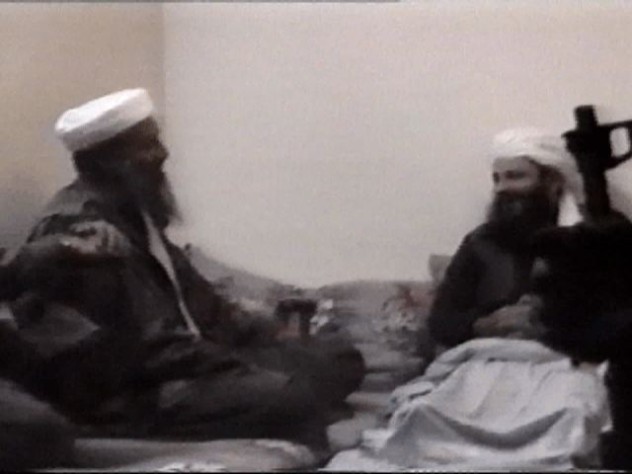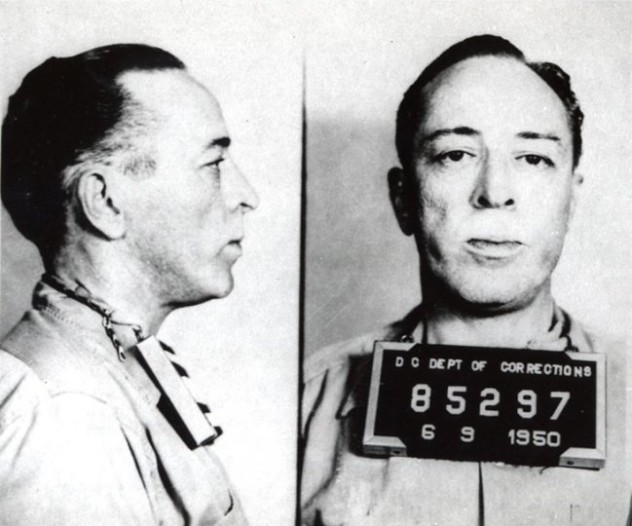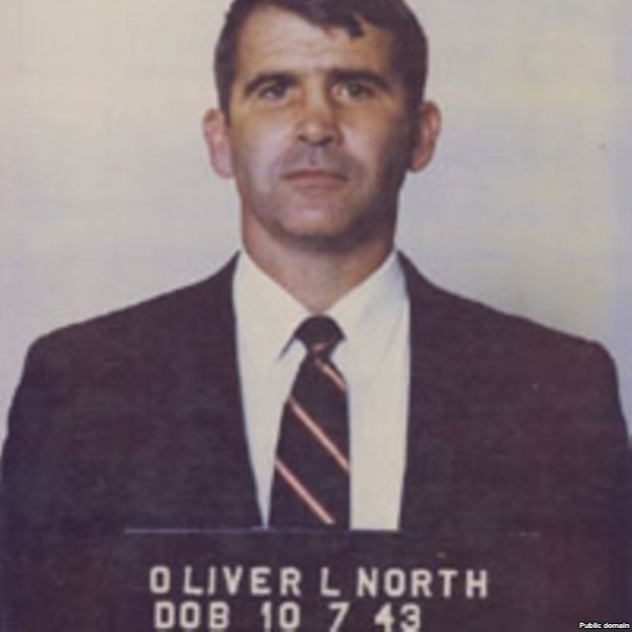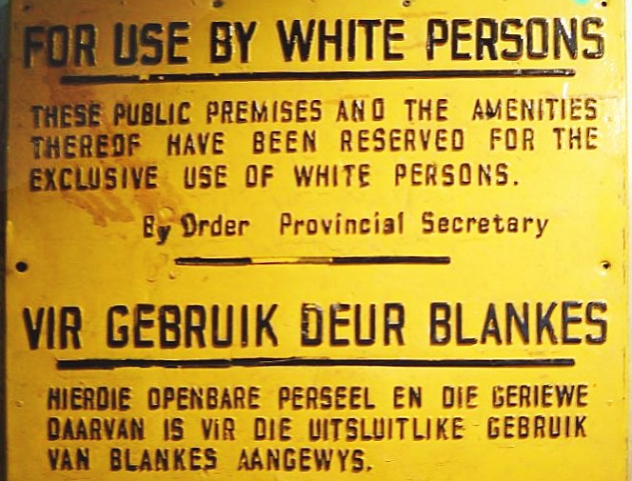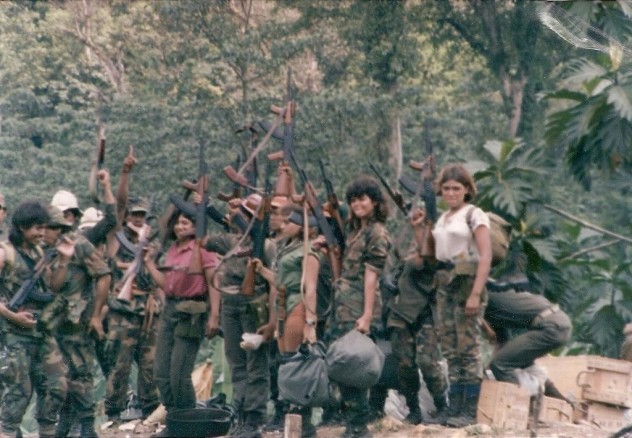10 Throwing Mental Patients Onto The Streets
Reagan’s mass purging of mental health hospitals first began when he was the governor of California. As governor, Reagan threw more than half of the state’s mental health patients out of hospitals and onto the streets. He abolished the hospitals’ ability to institutionalize patients with severe mental illness. With nowhere else for these mental patients to go—most with disabilities that prevented them from working—they simply became homeless. As a result of the actions of Ronald Reagan and others like him, America’s mental health system as a whole deteriorated so much that Congress was compelled to act. President Jimmy Carter signed into law the Mental Health Systems Act of 1980. The legislation sought to reform and rebuild America’s mental health system by developing community mental health programs and provide mental health services for Americans suffering from chronic mental illnesses. Curiously enough, one of the first major legislative actions Reagan undertook as president was to repeal this reform of America’s mental health system and slash federal funding for mental health care by 30 percent. As his presidency progressed, Reagan continued his former practice of throwing patients out of mental health hospitals, albeit on a much grander scale than what he undertook as California’s governor. During his presidency in the 1980s, some 40,000 beds in state mental hospitals were eliminated. During the aftermath in 1988, the National Institute of Mental Health estimated that 125,000–300,000 mental patients with chronic mental illness were homeless. As a result of Reagan’s actions, America’s mental health care system remains debilitated. Despite lawsuits, states like Nevada continue to illegally empty their mental hospitals and place their mental patients on buses that take them out of state, thus avoiding the bill.
9 Supporting And Creating Islamic Terrorists
At over 13 years in length, the War in Afghanistan is the longest war that America has ever fought. Over those 13 years, the United States has spent as much as $4 trillion, lost the lives of 3,500 troops, and injured another 23,000 fighting the Taliban. But amid all of this protracted chaos, we seem to have forgotten how Afghanistan got into such dire straights. Before Reagan, Afghanistan more closely resembled Ohio than a Stone Age war zone. In 1978, the Saur Revolution saw the Middle Eastern country turn from an Islamic monarchy into the Democratic Republic of Afghanistan. The new DRA government modernized and secularized Afghanistan in a way no other Middle Eastern government had in history. One of the most noticeable of these revolutionary reforms was a massive leap forward in women’s rights that has yet to be matched in the region, let alone Afghanistan. Needless to say, these reforms were not without their detractors, which included the odd alliance of both Islamic extremists and United States President Ronald Reagan. It just so happens that the Soviet Union supported these advances. Therefore, the Reagan Administration sought to overthrow the DRA government. Publicly and privately, Reagan and the CIA began to support, fund, and even arm a series of jihadist militants in Afghanistan, loosely known as mujahideen. Reagan was so fond of these Islamic jihadists that after arming and funding them with almost $5 billion of taxpayer money, he invited them into the White House and called them “freedom fighters.” With the blessing of Reagan, the mujahideen militants violently overthrew the DRA government and instituted a repressive Islamic state in its place. They removed all advances in women’s rights, economic reforms, and education reforms. However, the mujahideen would soon fracture. Some of the mujahideen forces became the Taliban, which the United States has spent countless dollars and American lives fighting. Others worked with Osama bin Laden and became Al-Qaeda, which carried out a litany of terrorist attacks including those of September 11. Perhaps one of the most notable figures supported and paid by the Reagan Administration and CIA was Ayman al-Zawahiri, whose group of jihadist fighters received a portion of the $500 million that the CIA sent to Afghanistan. Al-Zawahiri was closely associated with Osama bin Laden and orchestrated a variety of terrorist attacks, earning him the title of “terror mastermind.” After September 11, the State Department placed a bounty on his head, offering $25 million for any information leading to his capture. One of the mujahideen fighters was even Osama bin Laden himself. In fact, bin Laden got his start in the terrorism game by joining the mujahideen bolstered by Reagan and the CIA. Before joining the mujahideen, bin Laden wasn’t even ensconced in terrorism or Islamic radicalism; he was studying to get a degree in economics and business administration at a Saudi Arabian college before he abandoned his education to join the mujahideen in 1979. Controversy remains to this day as to whether or not Reagan and the CIA directly funded bin Laden himself, particularly because bin Laden was fighting with the mujahideen based in Pakistan, while the initial mujahideen forces bolstered by Reagan were based in Afghanistan. In 2004, the BBC claimed that bin Laden himself was not just supported by, but given military training from Reagan’s CIA. Others have corroborated the claims, including British government officials and an FBI whistle-blower. Unsurprisingly, United States government officials have denied the reports.
8 Involvement With McCarthyism
Before he entered into politics, Ronald Reagan was your average B-list actor. However, it was recently discovered that Ronald Reagan led a double life at that time as an informant for the FBI. Even more interesting is whom Reagan was spying on. They included fellow actors, writers, and directors in Hollywood who held what he and other right-wing politicians suspected were “un-American” views. Reagan was contracted by the FBI to spy on actors and filmmakers as part of Joseph McCarthy’s House Un-American Activities Committee. Reagan used his position as president of the Screen Actors Guild to invade the privacy of other actors, writers, and directors whom he thought had un-American views and labeled them as budding communists to the FBI and Un-American Activities Committee. As a result of Reagan’s snitching and the House Un-American Activities Committee witch hunt, a series of artists were blacklisted and prevented from working in the industry again. Some were even imprisoned merely for the political beliefs they held. Targets of the committee ranged from Spartacus and The Brave One screenwriter Dalton Trumbo to On the Waterfront director Elia Kazan, to Shampoo actress Lee Grant, all Academy Award winners. The blacklist not only marked one of the most shameful moments in American history, but it also demonstrated a flagrant disregard for the First Amendment and the freedom of speech in America by Reagan and those like him.
7 The Grant-Rigging Scandal
You may have heard of the Savings and Loan Scandal, which occurred when President Reagan began to deregulate the banking industry. Soon after 747 financial institutions failed as a result of the deregulation, they were bailed out with $160 billion of taxpayer money. Among others, five sitting senators—the Keating Five—were investigated for corruption following the bailout to institutions they had close ties to. However, a lesser-known case study in corruption happened around the same time with closer ties to President Reagan: the HUD Grant Rigging Scandal. The Department of Housing and Urban Development (HUD) under the Reagan Administration hatched a scheme to funnel money to contributors to Reagan’s campaign by rigging housing bids in their favor. Grants for low-income housing were rigged so that Republican lobbyists and contributors to Reagan’s campaign received them over other bidders who were otherwise more qualified to receive them. The HUD scandal wasn’t uncovered until Reagan left office, but when it was, it saw the convictions of 16 players in the Reagan Administration and Department of Housing and Urban Development. Reagan’s Secretary of the Interior, James Watt, was indicted on 24 felony counts. Watt pleaded guilty to only one of the charges and was sentenced to five years probation and ordered to pay a $5,000 fine. High-ranking HUD officials testified that Samuel Pierce, Reagan’s HUD secretary, was “intimately involved in decisions to award contracts to personal or political friends.” Pierce admitted responsibility for the corruption as the head of the department, but the prosecutor in the case never charged him with a crime, citing Pierce’s poor health.
6 The Office Of Public Diplomacy
In the middle of his presidency, Ronald Reagan created a secret agency known as the Office of Public Diplomacy (OPD) with one nefarious purpose in mind: propaganda. This was no ordinary propaganda. It was deemed “white propaganda,” designed to be used on the American people. The Office of Public Diplomacy began a widespread and sophisticated propaganda campaign both in and out of the United States with a special focus on manipulating politics in South America. One of its specialties was manipulating the media. They planted fake news stories throughout newspapers about the right-wing Contra terrorists Reagan was arming to try to overthrow the Nicaraguan government. Some “white propaganda” by the agency ran in newspapers ranging from the Wall Street Journal to the Washington Post to the New York Times. The Office of Public Diplomacy created a widespread media tour for the Contra terrorists and even created a fake news segment that aired on the NBC Nightly News after sending NBC reporter Fred Francis on a fake trip to see the Contras (who were really actors coached by the Reagan Administration.) The OPD also surveiled, harassed, and intimidated journalists who were not reporting what the Reagan Administration wanted. Employees in the OPD would routinely show up to major newspaper and TV news offices to bully reporters and editors into changing their news coverage into what the Reagan Administration wanted. When reporters and editors didn’t follow the orders of the Reagan Administration, the OPD waged their own war on the non-compliant journalists. They planted fabricated stories that claimed the anti-Contra journalists received sexual favors from male and female prostitutes paid for by the Nicaraguan government the Reagan Administration was trying to overthrow. The OPD’s activities were uncovered by the Comptroller General—a Republican appointee—in September 1987 and declared illegal soon after. In his report on the illegal propaganda agency, the Comptroller General claimed the Office of Public Diplomacy engaged in “prohibited, covert propaganda activities” which were “beyond the range of acceptable agency public information activities.”
5 Using Taxpayer Money To Influence Election Outcomes
Under the Reagan Administration, the Environmental Protection Agency and its Reagan-appointed employees became embroiled in a host of scandals. In Reagan’s first three years as president, over 20 high-ranking EPA employees were removed from their positions and in some cases imprisoned. Perhaps the most roundly illegal of these scandals was a scheme to fix elections with taxpayer money, otherwise known as “Sewergate.” The scheme was principally orchestrated by Rita Lavelle, a Reagan-appointed EPA administrator who began to tap into the EPA’s “Superfund” for quite nefarious purposes. The EPA’s Superfund is designed to be used to help clean up environmental disasters, but instead Reagan’s EPA administrators began to divert the fund into the campaigns of Republican candidates for state-level elections. An investigation began into Lavelle and the EPA after an EPA whistle-blower brought forward evidence that Lavelle had misused Superfund monies. The roughly $1.6 billion in Superfund monies were supposed to be used to clean up toxic waste dumps, but that didn’t quite happen. The cleanup efforts were used as opportunities to announce grants in Republican districts right before reelections while Democratic districts were ignored. Allegations were made that the money had acquired a political tinge. Lavelle was convicted of lying to Congress during the investigation and was stripped of her position, then convicted of perjury. She was sentenced to six months in prison and fined $10,000. Lavelle wasn’t the only Reagan confidant in the EPA who was penalized for the scandal. Another employee of the Reagan-era EPA named Anna Burford refused to turn over the records of the Superfund during a Congressional investigation into their scheme. She cited “Executive Privilege” as her reason for refusing to turn over the criminal evidence, suggesting the Executive branch directly dirtied its hands with the criminal activity. She was found in contempt for refusing to turn over the evidence, and resigned her position in the EPA.
4 Selling Illegal Arms To Iran
After Congress passed a law making it illegal for Reagan to fund right-wing terrorists known as the Contras in South America, the Reagan Administration attempted to work around the law. They hatched a series of schemes to launder money to the Contras in a way that would be untraceable to the prying eyes of the American public. One of these schemes involved illegally selling weapons to Iran for a profit while Iran was holding American citizens hostage. The Iran-Contra plan was first devised to trade illegal arms for American hostages being held in Iran. However, Reagan’s Lieutenant Colonel of the National Security Council, Oliver North, had the bright idea of making a hefty profit from the illegal arms sales and then using the proceeds to illegally fund the Contras in South America. The weapons included thousands of anti-tank and anti-aircraft missiles sent to the Iranian government on multiple occasions between August 1985 and October 1986, making tens of millions of dollars in the process. The money soon began to flow to the Contras in South America as they prepared to overthrow the Nicaraguan government. In November 1986, the illegal arms dealing was uncovered after a plane carrying a shipment of guns crashed in Nicaragua. After the news broke, members of the Reagan Administration destroyed evidence of their involvement in the scheme en masse. Fourteen major players in the Reagan Administration, CIA, and military were indicted. Those indicted ranged from John Poindexter (Reagan’s National Security Advisor who was convicted of five counts of conspiracy, obstruction of justice, perjury, defrauding the government, and the alteration and destruction of evidence) to Fawn Hall (Oliver North’s secretary who was indicted for helping North destroy a trove of evidence when the scandal was first brought to light). The grand irony of the Iran-Contra scandal is that Reagan won the presidency by marketing himself as tougher on Iran than Jimmy Carter was during the Iranian hostage crisis. According to a slew of allegations, Reagan may have developed a cozy relationship long before the Iran-Contra dealings when he allegedly asked the Iranian government to delay their release of American hostages until after his election campaign against Jimmy Carter ended and he was elected president. If Reagan did deliberately delay the release of American hostages to benefit his election campaign, he would be guilty of treason. Congress investigated the allegations now known as the October Surprise Conspiracy Theory twice—first in 1992 in the Senate, and a second time in 1993 when the House launched the House October Surprise Task Force. Both Congressional investigations ended when they turned up insufficient evidence. Major world leaders of the time have also corroborated the claims. Former Iranian president Abolhassan Bani-Sadr claimed that Reagan’s campaign demanded that he delay the release of the American hostages until after Reagan’s first election or else Reagan would actively bolster Bani-Sadr’s opposition party. Israeli Prime Minister Yitzhak Shamir has also confirmed the allegations, as did an aide to Palestinian leader Yasser Arafat who claimed that a senior Reagan adviser flew to Lebanon to lobby with the Palestinian leader to use his influence with Iran to delay the release of the hostages until after the election. But without conclusive proof, we may never know for sure.
3 Supporting Apartheid
Ronald Reagan’s legacy on race is tenuous to say the least. Before he found himself in elected office, Reagan opposed the Civil Rights Act of 1964, the Voting Rights Act of 1965, and the Fair Housing Act of 1968. Although these political stances may seem morally reprehensible today, holding them was not in and of itself criminal. Reagan’s criminal actions with regards to race came when he supported apartheid in South Africa. In 1986, as the horrors of South African apartheid shocked the world, the United States Congress passed what was known as the Comprehensive Anti-Apartheid Act. The law imposed a series of sanctions against the South African government and aimed at crippling the apartheid regime that carried out some of the worst racial segregation and human rights violations in human history. According to the law, the sanctions would be only lifted if the South African government put an end to apartheid. However, despite the fact that the law was passed by Congress, it did not go into law—at least, not at first. President Ronald Reagan opposed the sanctions and also vetoed the Comprehensive Anti-Apartheid Act. Despite an international coalition which set out to end apartheid, Reagan kept close ties with the racist South African regime behind it. Reagan met privately with P.W. Botha, the South African leader behind apartheid on multiple occasions. Reagan helped prop up P.W. Botha by denouncing the African National Congress that was determined to end his racist regime as dangerous and communist. After Reagan’s veto of the sanctions, an overwhelming bipartisan majority of Congress was able to achieve the rare act of overriding the president’s veto with a 78 to 21 vote in favor of the sanctions. Soon after, the Comprehensive Anti-Apartheid Act became law and helped cripple South Africa’s pro-apartheid government. Apartheid in South Africa was officially repealed a few years later in 1991.
2 Smuggling Cocaine
Although the term “Iran-Contra” was initially coined to reference the scandal involving the Reagan Administration’s illegal selling of weapons to Iran to fund Contra terrorists in Nicaragua, the scandal is a bit more expansive than the name would suggest. It was later discovered that they had another source of funding for the Contras: crack cocaine. The Reagan Administration and the CIA hatched a plan to conspire with the Contras to smuggle cocaine from South America into the United States. They turned a blind eye to cocaine smuggling by the Contras and shielded the drug smugglers from investigations. Reagan’s officials in the White House, including Oliver North, began to nurture the cocaine smuggling and funnel the proceeds to the Contra army in Nicaragua. Soon, the Reagan Administration and CIA took a more active role in drug smuggling. While American flight crews began smuggling arms down to Nicaragua, they were also smuggling in cocaine on their return flights. Members of the smuggling crew claimed to have protection from Oliver North. Some hangars used to dock the cocaine-filled airplanes were owned by the CIA and National Security Council, and some were operated by Oliver North himself. After the cocaine was smuggled into the United States by the CIA, it would then be sold to a drug distributor or kingpin like “Freeway” Rick Ross. The distributors would then convert the cocaine into crack cocaine and distribute it to street-level dealers, who sold it to addicts, mostly on the streets of the poorest neighborhoods in Los Angeles. Rick Ross was making as much as $3 million per day and $300 million in total profit—that’s $850 million adjusted for inflation—selling crack cocaine in Los Angeles. Freeway was sentenced to life imprisonment after he was arrested in a sting operation. According to his lawyers, the crack cocaine Ross sold was supplied by the CIA. The CIA’s inspector general, Michael Bromwich, testified that the Reagan Administration thwarted federal investigations into drug trafficking. At the same time, the Reagan Administration was ironically waging the War on Drugs, enacting harsh drug laws that gave possession of crack cocaine a sentence 100 times harsher than powdered cocaine, triggering a mass incarceration epidemic that remains to this day. The actions by the CIA and Reagan Administration are credited with sparking the crack epidemic by flooding the drug market with an unprecedented amount of high-quality cocaine at a low cost.
1 Supporting South American Terrorists And Genocide
For the United States, the 1980s seemed to be a peaceful time; the Vietnam War had finally ended and the United States was not at war any longer. However, the time period was actually one of the bloodiest periods in the history of the Western hemisphere, but almost all of it was isolated in South America. The Reagan Administration was guilty of crimes like the Iran-Contra affair, but the true crime committed was their support of the Contra army itself and other genocidal groups in South America. After the Reagan Administration armed and trained the Contra terrorist army, they soon tried to to overthrow the Nicaraguan government. In the chaos that ensued, the Contras began kidnapping and torturing civilians, raping women, executing civilians—including children—seizing and burning civilian houses, and assassinating health care workers. Nicaragua also claimed the Reagan-backed Contras killed an American citizen. When all was said and done, as many as 50,000 people died in the Contra killing spree. In the aftermath, Reagan and the United States government were tried in the International Court of Justice for their part in the death and devastation. The Reagan Administration was convicted of violating Nicaragua’s sovereignty and convicted of encouraging the widespread crimes against humanity by training them to commit the atrocities with a manual they supplied to the Contras entitled “Psychological Operations in Guerrilla Warfare.” The CIA-penned manual recommends the “selective use of violence for propagandistic efforts.” It told the Contras to “provoke riots or shootings” and “provoke mass murder so that it can be used as a propaganda tool.” Reagan claimed the Contra terrorists were “the moral equivalents of america’s founding fathers.” Nicaragua was to receive $17 billion in damages from the United States for the crimes, but despite the conviction, the United States government refused to pay the retributions. But the Reagan-sponsored bloodshed wasn’t restricted to Nicaragua. Reagan also dirtied his hands in El Salvador’s civil war, giving over $4 billion to El Salvador’s military dictatorship, which caused the deaths of over 75,000 in the war. In Guatemala, Reagan supported and propped up brutal dictator Efrain Rios Montt, who killed as many as 200,000 Guatemalans. Nathan is a freelance journalist and screenwriter.

